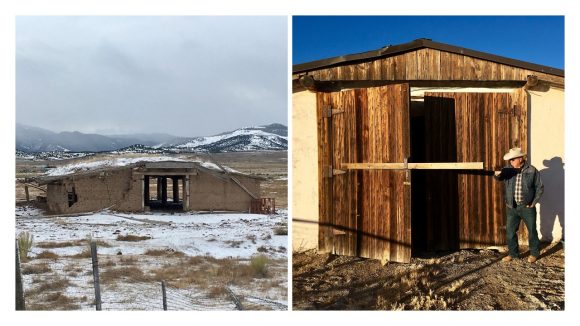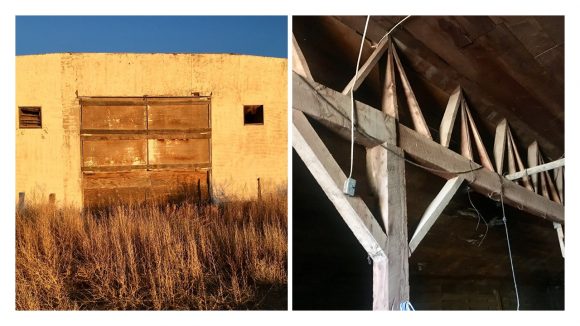Video courtesy of CBS4
Year Listed: 2019
County: Alamosa, Conejos, Castilla, Rio Grande, Saguache
Construction Date: Late 1880s through Mid 1960s
Threat When Listed: Demolition by Neglect; Weatherization; Climate Impacts; Abandonment
Status: ALERT

This regional, multi-site listing includes the adobe potato cellars of the San Luis Valley. These structures are unique to Colorado and their quality workmanship has helped them to withstand the elements over decades of time. Their unique building forms and materials keep the interior of the structures naturally cool, insulated, and at the perfect humidity for storage of potatoes, which were grown extensively in the valley. The structures range from rectangular shaped dugouts with shallow gambrel roofs composed of timbers and latillas covered with earth, to fully above ground structures with adobe walls and timber framed roofs with wooden shingles. Many have beautifully constructed wooden doors. Some of the adobe walls of the potato cellars are double-walled and air pocketed in between for insulation purposes. The above ground cellars were usually constructed in areas where the high groundwater table made a partially below-ground structure impossible. As many as 100 adobe potato cellars may be present in the region.

Large scale potato raising began in the San Luis Valley around 1910, and by 1930 four counties in the region (Alamosa, Conejos, Rio Grande, and Saguache) accounted for 47 percent of the state’s potato production. Today the Valley is responsible for 90 percent of Colorado’s output. Although storage of potatoes in the adobe cellars largely stopped in the 1960s, the buildings left their legacy on the land throughout the region. Some are still in use and are in good condition, while others are in deteriorating condition or have collapsed.
“The significance of the untold Hispano stories attached to the land, water, and surrounding area regarding these structures is very important to myself, my family, and many constituents in my district.”-Donald Valdez– State Representative, House District 62
Listing the Adobe Potato Cellars of the San Luis Valley provides CPI with the opportunity to partner with local groups in the Sangre de Cristo National Heritage Area and at the Salazar Rio Grande del Norte Center at Adams State University on efforts to preserve sites of significance to the Hispanic people and the culture of Colorado. These activities include identifying and documenting the potato cellars in the Valley, collecting oral histories of the people who lived on the land and worked in potato cultivation and farming, and working with interested private property owners on the preservation of representative examples of the building typology. Education about the historical significance of potato cellars to the Valley’s agricultural history will help raise landowner and public awareness as to the role they played in the potato economy. It is also hoped that programs to demonstrate how to properly repair and maintain historic adobe could result in better maintenance and preservation of these resources, which are a part of the rich natural and cultural history of the upper Rio Grande region.
In April 2020, a State Historic Fund grant application was submitted for construction documents relating to a full roof replacement of the Garcia Ranch Potato Barn. In 2021, emergency stabilization was completed with this funding. CPI hopes to make site contacts with other willing property owners and conduct oral histories with a select group. Work such as this could provide a valuable precedent for what is possible and act as a prototype for future developments with other cellars and barns across the region.





